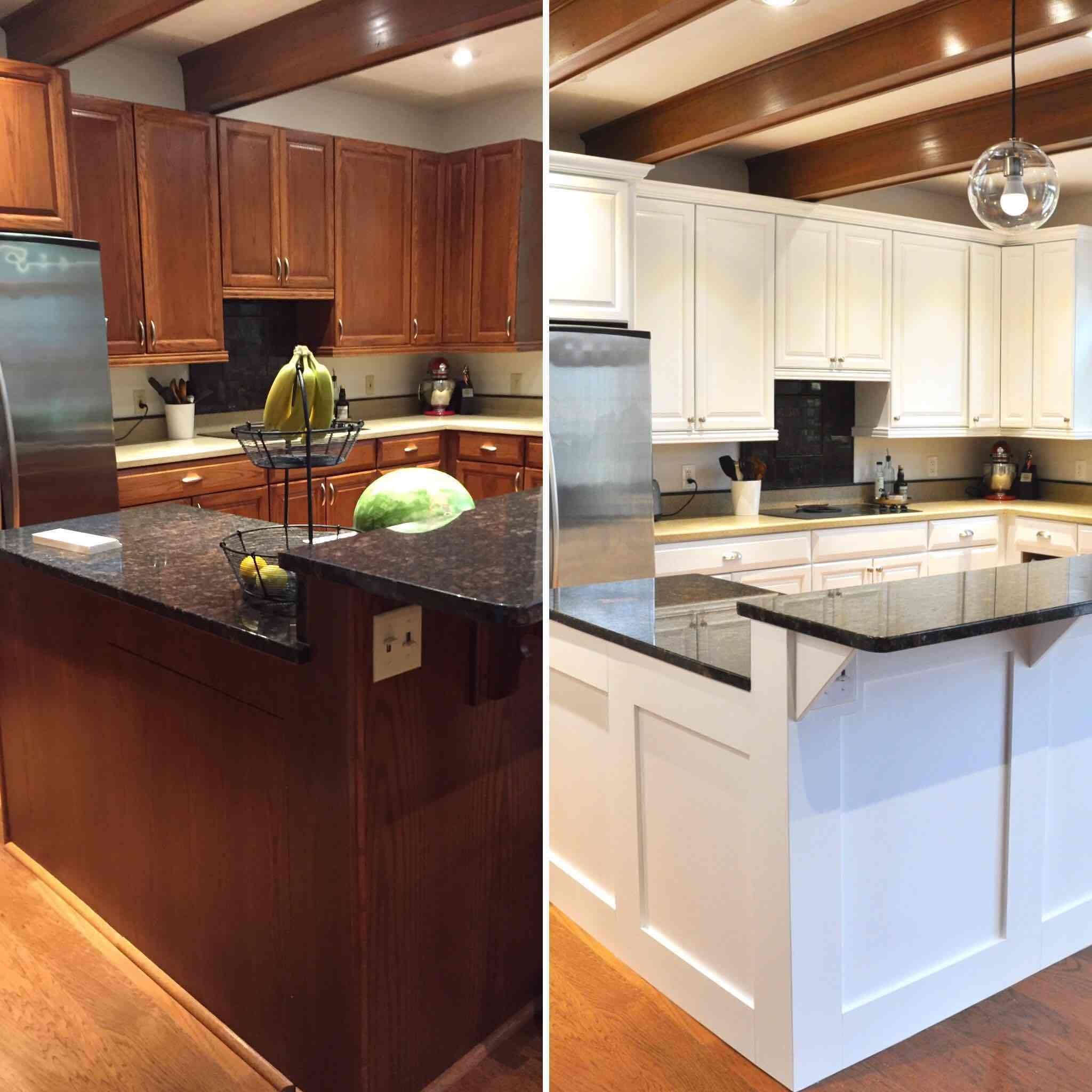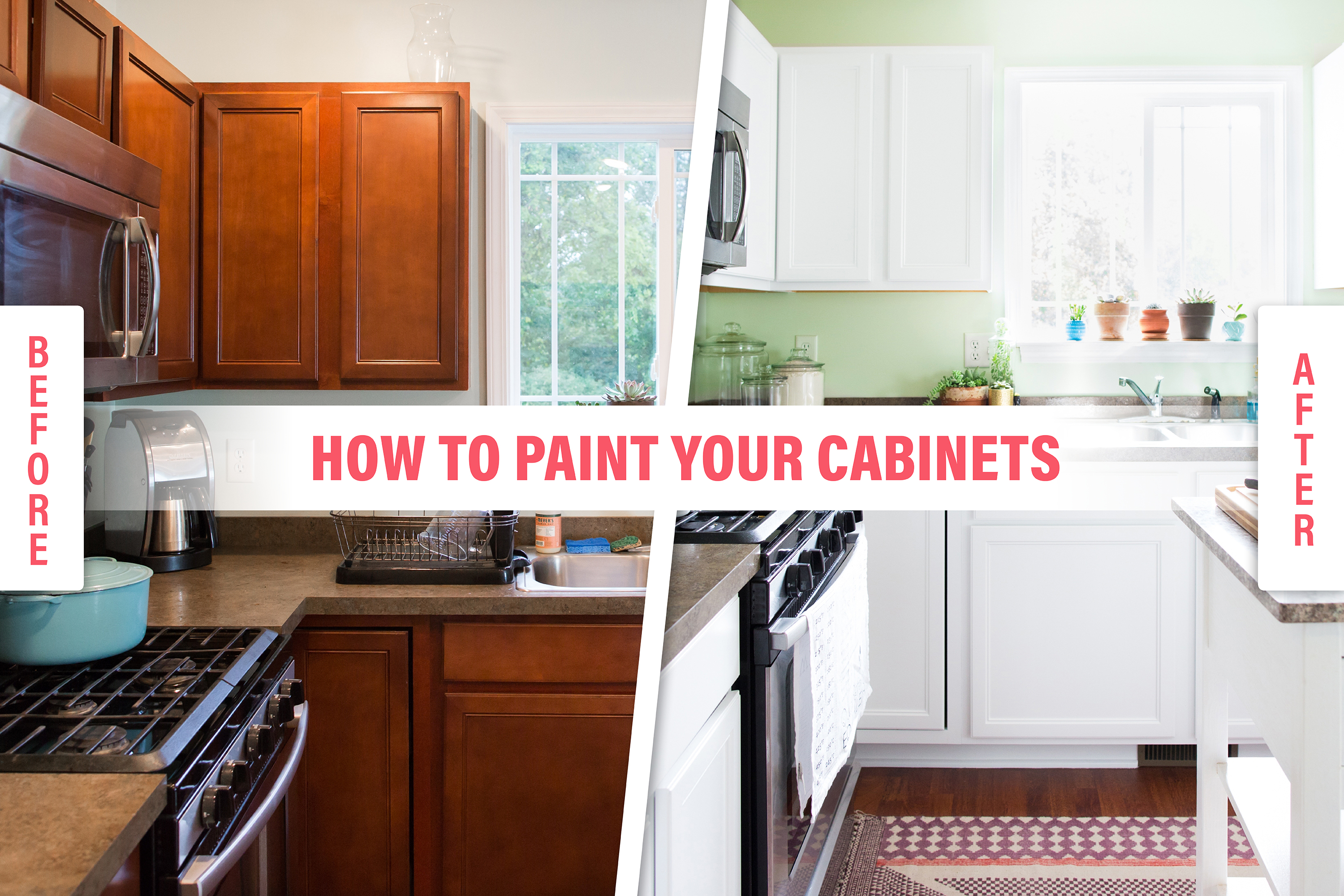Painting Oak Cabinets Antique White

Transforming your oak cabinets into elegant antique white pieces is a rewarding project, breathing new life into your kitchen or bathroom. Careful preparation and the right techniques are key to achieving a professional, long-lasting finish. This process involves several crucial steps, from meticulous surface preparation to the application of paint and the creation of the desired antique effect.
Preparing Oak Cabinets for Painting
Proper preparation is paramount for a successful paint job. Oak, with its distinct grain and porous nature, requires thorough sanding, cleaning, and priming to ensure optimal adhesion and a smooth, even finish. Begin by thoroughly cleaning the cabinets with a degreaser to remove any grease, grime, or old wax buildup. Allow them to dry completely. Next, sand the surfaces using progressively finer grits of sandpaper, starting with 120-grit to remove any imperfections and then moving to 180-grit and finally 220-grit for a smooth finish. Pay close attention to corners and edges. Vacuum or wipe away all sanding dust before proceeding. The final step is applying a high-quality bonding primer specifically designed for cabinets. This primer will seal the wood, preventing the oak tannins from bleeding through the paint and ensuring a uniform color. Two coats of primer are generally recommended, allowing each coat to dry completely before applying the next.
Painting Techniques for a Smooth Antique White Finish
Several painting techniques can be used to achieve a flawless antique white finish. Each method offers unique advantages and requires specific considerations.
Brush painting offers excellent control and is ideal for detailed work, particularly around intricate cabinet details. Use high-quality brushes with synthetic bristles, and apply thin, even coats, working with the grain of the wood. Overlapping strokes smoothly helps prevent visible brush marks.
Roller painting provides a faster application for large, flat surfaces, but it can leave a slightly textured finish. Use a high-density foam roller and a smooth, consistent rolling motion. Apply thin coats to avoid drips and ensure even coverage.
Spray painting offers the fastest and most even application, resulting in a remarkably smooth finish. However, it requires more preparation and a well-ventilated area. Use a high-quality spray gun and a thin coat of paint to avoid runs and drips. Multiple thin coats are recommended for optimal coverage.
Creating a Distressed or Antique Look
To achieve a truly antique aesthetic, consider incorporating distressing techniques. These methods add character and depth, enhancing the overall visual appeal of your painted cabinets.
| Technique | Description | Difficulty | Tools |
|---|---|---|---|
| Dry Brushing | Apply a darker paint color (e.g., a dark gray or brown) with a dry brush, barely loading the bristles with paint. The effect creates a subtle, aged appearance. | Easy | Dry brush, dark paint |
| Glazing | Apply a translucent glaze over the antique white paint. This allows the base coat to show through, creating a depth and richness that mimics aged paint. | Medium | Glaze, rags, brushes |
| Sandpaper Distressing | Once the paint is dry, lightly sand certain areas (edges, corners, raised details) to reveal the underlying wood or darker paint layers. This creates a worn and aged look. | Easy | Fine-grit sandpaper |
Color Choices and Considerations for Antique White: Painting Oak Cabinets Antique White

The transformation of oak cabinets into a timeless antique white requires careful consideration of the paint’s nuances. The subtle variations in shade and undertone can dramatically impact the final aesthetic, creating a space that feels either airy and bright or warm and inviting. Choosing the right antique white is paramount to achieving your desired look and ensuring the paint complements your existing décor and lighting conditions.
The spectrum of antique white encompasses a surprisingly broad range of colors. Different manufacturers offer their interpretations, leading to variations in undertones that can significantly alter the perceived color. A creamy antique white might feel softer and warmer, while a cooler, more grayed-out version will lend a more modern feel. The interplay of light further complicates matters; a shade appearing warm in natural sunlight might appear stark under artificial lighting. Understanding these subtle differences is crucial for selecting the perfect hue for your cabinets.
Antique White Paint Shades and Their Suitability for Oak Cabinets
Several paint brands offer excellent antique white options specifically formulated for cabinets. Benjamin Moore’s “White Dove” is a popular choice, known for its soft, slightly creamy undertone that works well in various lighting conditions. Sherwin-Williams’ “Alabaster” provides a slightly warmer, more yellow-toned antique white, ideal for creating a cozy atmosphere. For a cooler, more modern feel, consider Farrow & Ball’s “Wimborne White,” which incorporates subtle gray undertones. The choice depends on the desired ambiance and the existing light levels in the kitchen. In a north-facing room with limited natural light, a warmer antique white like Alabaster would be preferable to prevent the cabinets from appearing too stark. Conversely, a brighter, cooler antique white like White Dove would work well in a sun-drenched kitchen.
Types of Paint for Cabinets: A Comparison, Painting oak cabinets antique white
Selecting the right type of paint is crucial for achieving a durable and long-lasting finish on your oak cabinets. Each type presents distinct advantages and disadvantages.
- Oil-Based Paint: Offers superior durability and a hard, smooth finish, resisting scratches and wear. However, it has a strong odor, requires mineral spirits for cleanup, and takes longer to dry. This option is excellent for high-traffic areas, providing exceptional longevity.
- Latex Paint: Easier to clean up with soap and water, dries quickly, and has less odor than oil-based paint. While generally durable, it might not offer the same level of scratch resistance as oil-based paint. It’s a popular choice for its convenience and relatively low VOCs.
- Enamel Paint: Known for its exceptionally smooth, hard finish, providing excellent durability and resistance to moisture and stains. It’s ideal for kitchen cabinets but can be more challenging to apply than latex or oil-based paints, requiring careful preparation and technique. Cleanup typically involves mineral spirits or a specialized enamel paint thinner.
Sample Color Palette: Antique White and Complementary Accents
A successful design incorporates a harmonious balance between the primary color (antique white cabinets) and complementary accents. Here’s a sample palette:
- Antique White (Base): Sherwin-Williams “Alabaster” – provides a warm, inviting backdrop for the kitchen.
- Hardware: Brushed Nickel – Its cool metallic tones provide a sophisticated contrast to the warmth of Alabaster, offering a touch of modern elegance.
- Countertops: Carrara Marble – The soft gray veining in Carrara marble complements the subtle warmth of Alabaster, creating a visually appealing and timeless combination.
- Accent Wall: Soft Gray-Green (e.g., Benjamin Moore “Gray Owl”) – A muted gray-green adds depth and visual interest without overwhelming the antique white cabinets. This soft color adds a calming and sophisticated touch.
Project Management and Troubleshooting

Transforming your oak cabinets into elegant antique white masterpieces requires meticulous planning and a proactive approach to potential challenges. This section provides a structured plan, addressing common issues and offering solutions for a successful transformation. Remember, patience and attention to detail are key ingredients in this rewarding project.
Step-by-Step Painting Plan
A well-defined plan ensures a smooth workflow and minimizes disruptions. This plan assumes a standard kitchen cabinet refacing project; adjust the timeline based on the scale of your project.
- Preparation (2-3 days): Thoroughly clean cabinets with a degreaser, removing grease and grime. Sand with fine-grit sandpaper to create a smooth surface for better paint adhesion. This step is crucial for a professional finish; skipping it can lead to peeling or chipping. Fill any gaps or holes with wood filler, allowing ample drying time before sanding smooth.
- Priming (1 day): Apply a high-quality bonding primer designed for cabinets. This step is essential, especially with oak, to block tannins and ensure even paint coverage. Apply thin, even coats, allowing each to dry completely before applying the next.
- Painting (2-3 days): Apply two to three coats of antique white paint, allowing sufficient drying time between each coat. Use high-quality paint specifically formulated for cabinets to ensure durability and longevity. Consider using a paint sprayer for a smoother finish, or a high-quality brush for a more textured look. Always follow the manufacturer’s instructions for drying times.
- Hardware Refinishing or Replacement (1-2 days): Once the paint is fully cured, remove and refinish or replace cabinet hardware. This allows for a completely refreshed look and adds the final touch to your transformation. Clean the hardware thoroughly before reinstalling.
- Finishing Touches (1 day): Inspect the cabinets for any imperfections and address them with touch-up paint. Apply a clear coat sealant for added protection and durability. Allow ample time for the sealant to cure completely before using the cabinets.
Resource Allocation and Material List
Accurate budgeting and resource planning are crucial for a successful project. The following is a sample list; quantities will vary based on the number of cabinets.
- Degreaser
- Fine-grit sandpaper (120-220 grit)
- Wood filler
- Putty knife
- Primer (bonding primer for cabinets)
- Antique white cabinet paint (at least two quarts)
- Paint brushes or sprayer
- Paint rollers (optional)
- Drop cloths
- Painter’s tape
- Cabinet hardware (if replacing)
- Clear coat sealant
- Safety equipment (respirator, gloves, eye protection)
Troubleshooting Common Painting Problems
Addressing common issues proactively can save time and prevent frustration.
- Drips: Prevent drips by using the correct amount of paint on your brush or sprayer and applying thin, even coats. Allow ample drying time between coats. If drips occur, carefully sand them smooth once dry and re-apply paint.
- Uneven Coverage: Ensure proper surface preparation (cleaning and sanding) before priming and painting. Apply thin, even coats, allowing each to dry completely before applying the next. Multiple thin coats provide better coverage than one thick coat.
- Brushstrokes: Using a high-quality brush or sprayer can minimize brushstrokes. For a smoother finish, use a paint sprayer or apply thin coats with long, even strokes in one direction. Lightly sand between coats to smooth out any imperfections.
Ventilation and Safety Precautions
Proper ventilation and safety measures are paramount when working with paints and solvents.
Painting oak cabinets antique white – Work in a well-ventilated area, preferably outdoors or with adequate ventilation systems. Always wear appropriate safety equipment, including a respirator to filter out paint fumes, safety glasses to protect your eyes, and gloves to protect your skin. Follow the manufacturer’s instructions on the paint and solvent containers for safe handling and disposal. Keep children and pets away from the work area during painting and drying.
